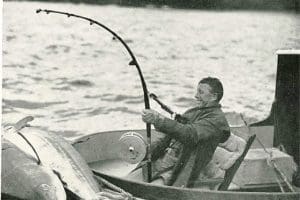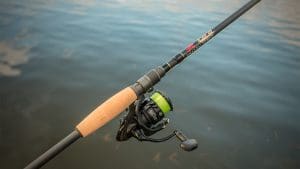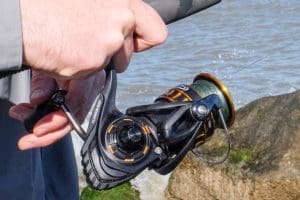
Fishing with a rod is an activity that has accompanied humans for centuries, blending sport, patience, and technique. But beyond what can be seen on the surface, there are many curiosities that make this pastime truly fascinating. Below, we present some of the most interesting ones so you can dive deeper into this art.
Contents
History of Rod Fishing🐟
The Origins of Rod Fishing
While many associate rod fishing with a modern hobby, it actually has very ancient roots. The earliest evidence of rod fishing dates back to ancient Egypt, where similar tools were already in use. However, the use of hooks and rods has evolved significantly over time.
In the Middle Ages, fishing was documented as a recreational activity for nobles. This type of fishing became popular, especially in England, with the creation of bamboo rods and lines made from horsehair. These technological advances were key to the development of modern rod fishing.
Historical Curiosities of Rod Fishing
Throughout history, rod fishing has had its curious moments and unique advancements. For instance:
- In Japan, the Tenkara technique (fishing with a rod without a reel) dates back centuries and remains popular.
- In Europe, during the 17th century, dry fly fishing began to spread, giving rise to a technique still widely used today.
- The term “angling” originates from “angle,” which means “hook.”
Each culture has developed its own variations and adaptations of this art, making it an activity rich in history and tradition.
Types of Fishing Rods🐟
Rods for Different Techniques
There are various types of fishing rods, each suited to different fishing methods. Here are some of the most popular:
- Spinning rod: one of the most widely used by sport fishermen. Its versatility allows for easy use of artificial lures and bait.
- Fly rod: primarily used for fly fishing, which requires precise technique and patience.
- Surfcasting rod: specifically designed for long-distance casting from the shore.
- Jigging rod: designed for vertical fishing in deep waters, ideal for catching large fish.
Curiosities About Rod Materials
Fishing rods are made from different materials, and this can affect both their price and durability. Among the most common materials are:
- Fiberglass: strong and flexible, ideal for beginners.
- Carbon fiber: lightweight and strong, used in more advanced rods.
- Bamboo: one of the most traditional materials, still used in fly fishing.
Most Curious Fishing Techniques🐟
Fly Fishing and Its Origins
One of the most curious and challenging techniques is fly fishing. Although it may seem like a recent trend, this method has been around for hundreds of years. In this technique, the fisherman uses a lure that mimics the appearance of insects or small aquatic animals, requiring a deep understanding of fish behavior.
Additionally, fly fishing has an aesthetic factor: the graceful movements of the fisherman while casting the line create a visual dance on the water.
Curiosities About Fishing Gear🐟
The Oldest Hooks
The hook is a fundamental part of rod fishing, and its design has changed significantly over time. The earliest known hooks were made of bone, stone, or even seashells. Today, hooks are made of metal and come in an impressive variety of shapes and sizes, each designed to attract a specific type of fish.
The Reel and Its Evolution
The reel is another essential piece of fishing equipment. The first mechanical reel known was invented in China around the 3rd century. However, it wasn’t until the 18th century that the first modern reels began to be developed in Europe.
A fun fact: in the 19th century, fishermen added brakes to the reels to better fight against larger fish, preventing them from breaking the fishing line.
Myths and Beliefs in Rod Fishing🐟
Popular Fishing Beliefs
Over time, rod fishing has accumulated several curious beliefs and myths. Among the most common are:
- Fishing at night brings more luck: many anglers believe that fish are more active at night, making it easier to catch them under the moonlight.
- Using shiny lures attracts more fish: while not always true, some believe that bright colors are more effective.
- Experienced fishermen have a “magic touch”: it is said that some fishermen have a special knack for attracting fish, something more related to experience and technique than luck.
Curiosities About Superstitions
Among the superstitions, it’s said that bringing bananas on a fishing boat brings bad luck. This belief comes from ancient sailors’ tales claiming that the fruit attracted misfortune or even storms.
What is the best type of rod for beginners?
The best type of rod for beginners is a spinning rod. It’s easy to use, versatile, and works well with various types of bait and lures. Spinning rods are designed to be lightweight and allow for accurate casting, making them ideal for beginners who are learning how to control their casts. Additionally, they are affordable and widely available, which makes them a great starting option for those new to fishing.
Practical Tips to Improve Rod Fishing🐟
Choose the Right Equipment
To improve at rod fishing, it’s essential to have the right equipment. A key tip is not to always opt for the most expensive gear but to choose what best suits your needs. For example, if you fish in rivers, a lightweight spinning rod is ideal.
For sustainable fishing practices, check out our detailed guide on Fishery management.
Patience and Observation
Patience is a key virtue in fishing. It’s also important to learn to observe your surroundings: the activity of the fish, the weather, and water currents. These details can make the difference between a successful fishing day and a frustrating one.
Practice Casting
Casting is one of the most technical skills in rod fishing. Practicing different casting techniques will improve your accuracy and range, which is vital for catching fish in various conditions.
Curiosities About Rod Fishing in Different Cultures🐟
Rod Fishing in Japan
In Japan, fishing has a long tradition, and one of the most curious methods is Tenkara, a technique that doesn’t use a reel but rather a simple bamboo rod and line. This minimalist technique is perfect for those seeking a technical challenge and a more direct connection with the fish.
If you’re curious about creative ways to enjoy your catch, don’t miss our 5 Exquisite Recipes Mújol Fish collection.
Fishing in Native American Culture
Some Native American tribes in North America used techniques similar to modern rod fishing but with natural materials like branches and vines. Additionally, fishing was seen not just as a means of subsistence but also as a spiritual activity.
How can I improve my fly fishing technique?
To improve your fly fishing technique, focus on perfecting your casting for accuracy, choose flies that match local insects, and practice line control to manage drifts effectively. Understanding fish behavior and staying patient will also help refine your skills over time.


